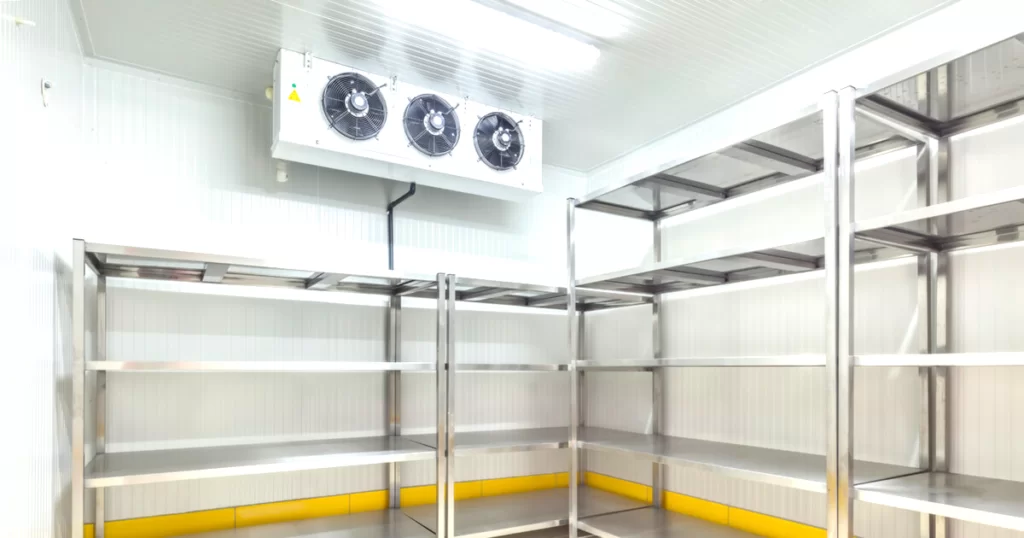
A cold room is a large, refrigerated storage area designed to keep perishable goods, like food, pharmaceuticals, and other temperature-sensitive products, at controlled, low temperatures to extend their shelf life and maintain quality. Cold rooms are commonly used in industries like food processing, pharmaceuticals, and logistics, where maintaining specific temperature and humidity levels is crucial.
Key Features of Cold Rooms
- Temperature Control: Cold rooms typically maintain temperatures between -30°C to 10°C (or -22°F to 50°F), depending on the application.
- Chill Room: Keeps temperatures just above freezing, usually between 0°C and 5°C (32°F to 41°F), suitable for fresh foods.
- Freezer Room: Maintains temperatures below freezing, often -18°C (0°F) or lower, ideal for long-term storage of frozen products.
- Insulated Structure: Cold rooms are built with high-quality insulation (like polyurethane or polystyrene panels) to minimize heat gain and maintain consistent temperatures, reducing energy consumption.
- Humidity Control: Many cold rooms feature humidity controls to manage moisture levels, which is especially important for items like produce, which require specific humidity to prevent spoilage.
- Refrigeration System: Cold rooms have powerful refrigeration units that regulate temperature. These systems include compressors, evaporators, condensers, and fans that circulate cold air to ensure even cooling.
- Air Circulation: Proper airflow inside a cold room ensures consistent cooling and prevents warm spots, which can lead to spoilage.
- Monitoring and Alarms: Cold rooms often have sensors, thermostats, and alarms that monitor temperature and humidity levels. If conditions deviate from set limits, alarms notify personnel to take corrective action.
Uses of Cold Rooms
- Food Industry: For preserving fresh produce, dairy, meat, seafood, and frozen foods.
- Pharmaceuticals: Stores vaccines, medications, and other sensitive products that require strict temperature control.
- Floral Storage: Maintains optimal conditions to keep flowers fresh for longer periods.
- Chemical Storage: Some chemicals require cold temperatures to maintain their stability and safety.
- Logistics and Warehousing: For large-scale storage and transport of perishable goods.
Benefits of Cold Rooms
- Extended Shelf Life: Slows down bacterial growth and chemical reactions, keeping products fresh longer.
- Quality Maintenance: Preserves the texture, flavor, and nutritional value of perishable goods.
- Compliance with Standards: Many industries have regulations for storing temperature-sensitive products; cold rooms help meet these requirements.
- Efficient Space Utilization: Cold rooms allow bulk storage, helping industries optimize their inventory management.
Types of Cold Rooms
- Modular Cold Rooms: Customizable and flexible in size; ideal for businesses with changing storage needs.
- Walk-in Cold Rooms: Generally smaller, designed for easy access, and commonly used in restaurants or small businesses.
- Industrial Cold Rooms: Large-scale units used in warehouses or distribution centers for significant volumes of perishable goods.
Cold rooms are essential for maintaining the integrity of perishable products and are foundational to many supply chains in industries that depend on reliable temperature-controlled storage.
